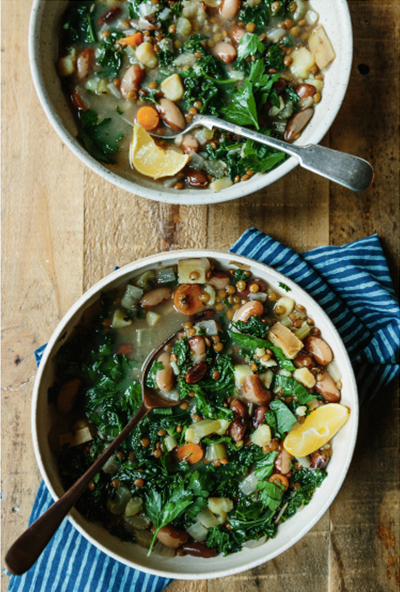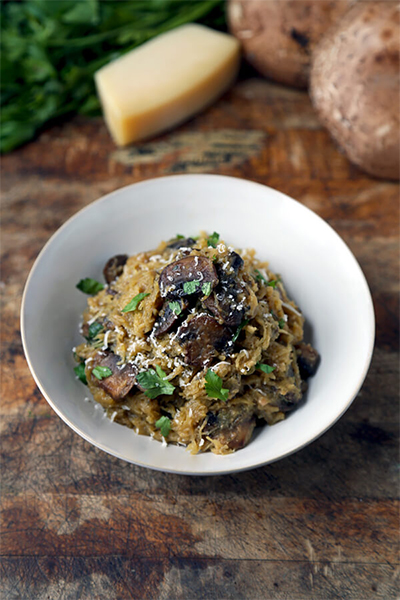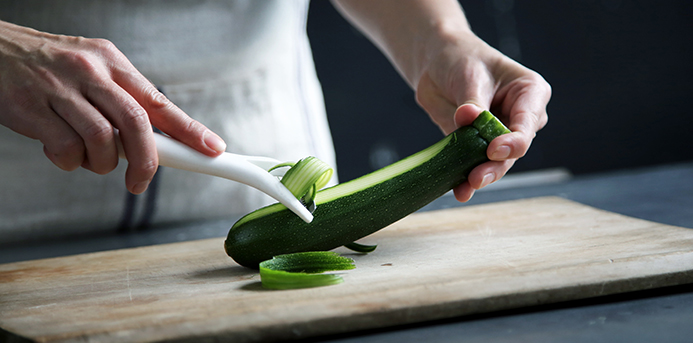You don’t have to completely overhaul your diet to start eating healthier. Making small, simple switches can produce big-time health benefits.
“For most people, I find that making smaller changes over time has the best impact as the changes are easier to sustain long-term,” says Colleen DeBoer, clinical nutrition manager at Northwestern Medicine Lake Forest Hospital. “Smaller changes can be more sustainable and people tend to feel less deprived, helping them stick with their changes longer.”
Those small changes can definitely translate to better health. The Centers for Disease Control and Prevention report that more than one-third of American adults are obese, and that puts them at risk for conditions like stroke, heart disease, and certain kinds of cancer. “Most of the recommendations that are made for diet trade-offs are aimed at reducing calories by cutting back on added sugars and fat, which greatly contribute to the obesity epidemic. This reflects the quantity issue with added sugars and fat,” says Carolyn Lammersfeld, vice president of integrative medicine at Cancer Treatment Centers of America®.
Lammersfeld, DeBoer and Emmaline Rasmussen, dietitian at NorthShore University HealthSystem, share their favorite suggestions for easy diet switches.
1. Super Soups
Cooler weather may have you craving comfort food, but there are plenty of healthy ways to get that cozy feeling. “Comfort food doesn’t have to be heavy and full of calories. Soups can be a healthy way to get in a wide variety of food groups and are comforting as well,” says DeBoer. They can also keep you full for a longer period of time.
Instead of creamy soups and chowders, DeBoer suggests sticking with low-sodium, broth-based soups, as many soups can be high in sodium. She also recommends loading up with veggies, plus beans and/or lentils for some protein.

Soups can be quick and easy to make, too. Lammersfeld says the quick black bean and butternut squash and apple soup recipe in her book “Cancer Nutrition & Recipes for Dummies” can be whipped up in a slow cooker in the amount of time it takes to get fast food.
Cooking your own soup also means controlling the salt and other nutrients. For example, do you love broccoli cheddar soup too much to give it up? Rasumussen recommends adding pureed butternut squash and substituting it for half of the cheese in the recipe.
2. Make Room for Mochi
The upcoming holidays mean that cookies will be in abundance. Don’t give in to the temptation and instead try substituting mochi to satisfy your sweet tooth. “Mochi is a sweet brown rice often found in the frozen food section of a health food store. You can take little pieces off of it and pop in the oven. This can be a nice treat as the weather gets cold, and is also good for people on the move,” Lammersfeld explains.
3. Swap Squash for Pasta
Cutting back on carbs can be beneficial, so say “so long” to pasta and opt for spiralized zucchini noodles or spaghetti squash instead. “Serving squash can save 200-250 calories in place of pasta,” says Rasmussen. “It’s a serving or two of vegetables, too. It’s a simple swap that also helps you meet your recommended serving of veggies.”

She also suggest swapping for chickpea noodles or lentil-based pasta. “Those are going to have more protein and fiber while also being lower in carbs and empty calories,” explains Rasmussen.
4. Cue the Cauliflower

Cauliflower is having a moment. Take advantage by adding this versatile vegetable in place of starches, be it as cauliflower rice in place of white rice, mashed cauliflower instead of mashed potatoes, or use it to make pizza crust.
If you’re worried that cauliflower isn’t colorful enough to have lots of nutrients, fear not. The CDC included cauliflower as one of the top 30 powerhouse vegetables in the Aggregate Nutrient Density Index. It is high in vitamin C, folate, and antioxidants. Cauliflower is also a good source of fiber and vitamin K.
5. Ditch the Candy and Grab a Date
Craving sweets? There’s a swap for that! “Candy and sugary, fat-filled sweets are tempting, but try grabbing dates instead, which are full of healthy fibers and minerals. For an extra treat, try ones that are rolled in coconut,” suggests Lammersfeld.
6. Be Particular With Your Peanut Butter
Peanut butter can be a good way to get protein and please the whole family, but the type you choose matters. DeBoer recommends opting for natural peanut butter over reduced-fat peanut butter. The latter has added sugar, carbohydrates, and salt to make up for the fat that was removed. “Natural peanut butter has monounsaturated fats which are heart-healthy, so it is beneficial to go with the higher fat and natural option,” she says.
7. Get Smart With Your Snacks
If you crave the satisfying crunch of chips, Rasmussen suggests trying roasted chickpeas instead, and shares her easy recipe: Rinse a can of chickpeas under water, dry them and spread them on a baking sheet. Drizzle lightly with olive oil and sprinkle with salt and pepper, and any other seasoning you like, then bake them in the over at 350 degrees for 30 minutes. “They get nice and crispy, just like chips,” she says. Other healthy options are kale or Brussels sprout chips.
8. Warm Up With the Right Hot Beverage

Fancy coffee drinks are especially popular as the weather gets cooler, but they can be packed with sugar, fat, and calories.
Tea can be a great way to get some flavor and a caffeine boost without the added calories. For a tasty autumn treat, try half apple cider, half black tea.
If you can’t give up your latte, ask for it with low-fat or nonfat milk and a small pump or two of flavoring. Some drinks have as many as five, but you can get the flavor with less while losing some of the sugar. Cinnamon is another way to add flavor but not calories. Switching to low-fat, skim milk, or unsweetened almond milk in your coffee is another way to shave calories. Rasmussen cautions though that coconut milk has added sugar.
9. Pick Healthier at Parties
We all know the cardinal party rule is “no double dipping,” but if you’re trying to make healthy choices, you may want to skip the dip altogether. “Be cautious with high-fat dips and excessive amounts of simple carbohydrates like crackers, pasta, and white bread, which can raise your blood sugar and won’t keep you satisfied for very long,” says DeBoer. She favors protein-rich foods, which fill you up faster. “Try sticking with lean options when possible, like fish, chicken, and turkey. Nuts and cheese are other good sources of protein often found at parties.”
10. Alter Your Approach to Alcohol

Mixed drinks often have lots of sugar and calories. “Stick with red wine that has heart benefits,” says Rasmussen. Also, have a glass of water in between alcoholic drinks.
11. Say So Long to Cereal
You may think of cereal and granola as a healthy breakfast choice, but both can be high in carbohydrates and packed with added sugar. Instead, try these better breakfast options the experts recommend: DeBoer suggests making your own homemade granola using minimal sugar, and Lammersfeld recommends overnight oatmeal with fresh or frozen. Both have less sugar and more fiber.
12. Go Fish

All the experts recommend limiting processed and red meats and instead substituting more beans, which can be great for Meatless Monday. If you don’t eat much fish, add it to your healthy protein rotation. Rasmussen likes trout, Lake Superior whitefish, and salmon for its omega-3 fatty acids that are good for your heart, brain, and eyes.
Feature image by Caroline Attwood on Unsplash.
More from Make It Better:
- Stress Relief: How to Relax in 1 Minute, 1 Hour or 1 Day
- 4 Bad Health Habits You Need to Quit, and 4 Good Ones to Adopt Instead
- 7 Tips for Establishing a Good Relationship With Your Doctor — and What to Do When It’s Not Working

Shannan Younger is a writer living in the western suburbs of Chicago with her husband and teen daughter. Originally from Ohio, she received her undergraduate and law degrees from the University of Notre Dame. Her essays have been published in several anthologies and her work has been featured on a wide range of websites, from the Erma Bombeck Humor Writers Workshopto the BBC. She also blogs about parenting at Between Us Parents.
Shannan is the Illinois Champion Leader for Shot@Life, a campaign of the United Nations Foundation that supports vaccination efforts in developing countries to ensure life-saving vaccines reach the hardest to reach children. “Vaccines are one of the most effective ways to save the lives of children in developing countries and I’d love nothing more than to see diseases eradicated,” Shannan says. “We are so close to getting rid of polio for good!”

